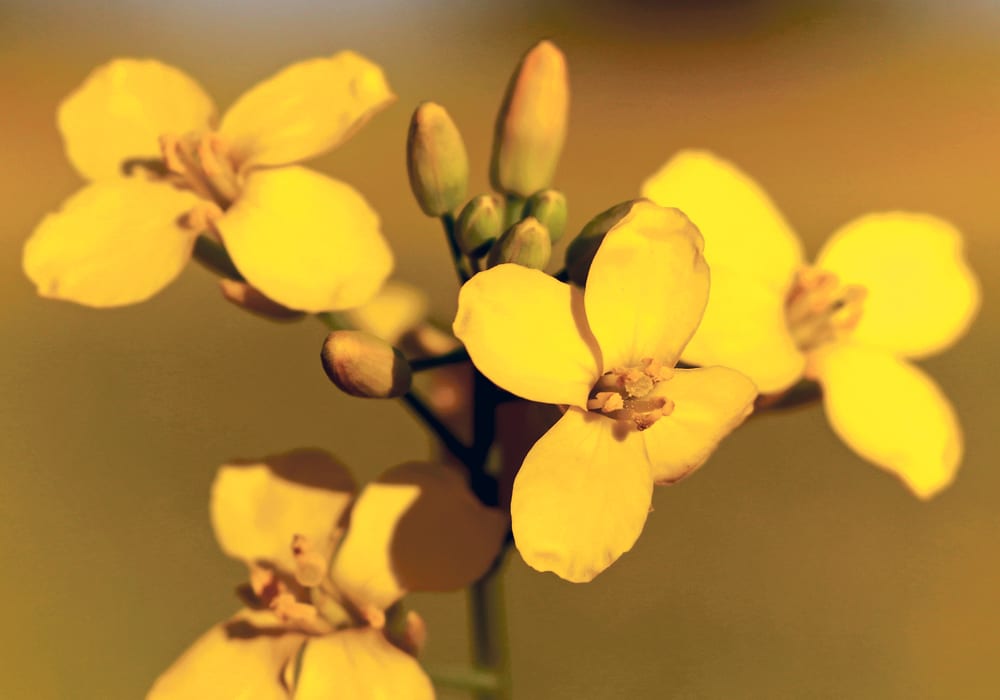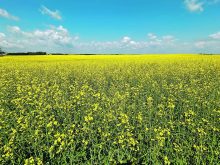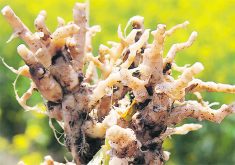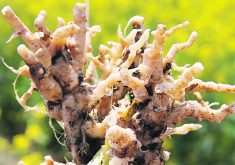Agricultural Producers Association of Sask. delegates examine ways to fight the disease as it spreads into their province
Saskatchewan farmers are watching the spread of clubroot with alarm.
The release of the province’s distribution map early next year will only confirm what many already know: the canola disease is closer and more prevalent than they thought.
Delegates to the Agricultural Producers Association of Saskatchewan annual meeting held late last month said they hoped that spread could still be stopped.
“I hope we’re not too late,” said vice-president Ian Boxall from Tisdale. “If we don’t control the flow of equipment across border lines and put some policies and practices on cleaning that equipment before it crosses borders, we have an issue. That hasn’t been addressed.”
Read Also

Farming Smarter receives financial boost from Alberta government for potato research
Farming Smarter near Lethbridge got a boost to its research equipment, thanks to the Alberta government’s increase in funding for research associations.
Boxall also said there is nothing to deter farmers from growing canola on fields that had grown canola the previous year. He said farmers should be pushed to change that practice because it leads to quicker disease spread.
“We need, whether it be crop insurance or something else, to force guys to follow best management practices.”
Barb Ziesman, provincial plant disease specialist, said educating farmers about proper crop rotations, rather than forcing them, is the province’s strategy right now.
Agriculture Minister David Marit, who addressed the convention, said afterward he wasn’t anxious to force anyone to farm a certain way.
“It’s a right to farm (issue),” he told reporters. “The other aspect of it is you start putting demands or regulation in place … that’s obviously easy to say but how do you do it, how do you police it?”
He said some producers use private insurers rather than crop insurance.
“We just have to get an education and awareness out there of the impact of what they’re doing not only to themselves but to the industry,” Marit said.
Producers at the meeting noted that canola pays the bills, which is why farmers grow so much of it.
Karl Koch from the Rural Municipality of Manitou Lake said the cost of land and equipment means farmers rely on canola to make ends meet.
“You need better prices for oats and wheat and everything else so you’re not growing $12 canola all the time,” he said.
He also asked why land found to have clubroot isn’t posted.
Ziesman said the soil-borne nature of the disease is the reason.
“If you find a field with a gall the size of a golf ball, there’s a pretty good chance it’s not isolated to that field,” she said. “That’s why we’re doing awareness on a regional level. The risk extends beyond that one field. Everyone in that area should have a heightened awareness.”
She added that the 2018 Saskatchewan survey of 1,500 fields is a drop in the bucket of how many canola fields they could have examined. That survey found 37 commercial canola fields are now infected and the disease is in at least five crop districts: 9A and 9B were confirmed in 2017 and 7B, 6B and 5B this past year.
Shawn Senko, Canola Council of Canada agronomist, said growers shouldn’t rely on resistant varieties because over time clubroot will overcome that.
He said a field with a low infection has less than 1,000 spores per gram of soil, while highly infected soil has one billion spores or more.
“It’s a numbers game,” he said. “In every one of those galls there’s going to be a certain number of resistant spores. The more spores you have, the more resistant spores you’re going to have.”
Sanitation and rotation are critical to retaining those resistant varieties longer, Senko said.
Meanwhile, Saskatchewan potato growers have been told to source their seed from non-clubroot infested areas.
Ziesman said an Alberta study found there is a risk that clubroot could be spread in earth that is shipped around on potatoes, and that risk increases because there is potentially more soil moving with seed potatoes.


















